Distracted students and stressed teachers: What an American school day looks like post-COVID
After a day full of math and reading lessons, third grader Ashley Soto struggles to concentrate during a writing exercise. She’s supposed to be crafting an essay on whether schools should serve chocolate milk, but instead she wanders around the classroom. “My brain is about to explode!” she exclaims.
Across the country, fourth grade teacher Rodney LaFleur looks for a student to answer a math question. He reaches into a jar filled with popsicle sticks, each inked with the name of one of his students. The first student’s name he draws is absent. So is the second. And the third.
Principal Jasibi Crews goes through her email: She has seven absent employees and too few substitutes to fill in. She texts a plea to a group chat – are any coaches or support staff available to fill in? Dozens of children could be without teachers today if she doesn’t come up with a plan.
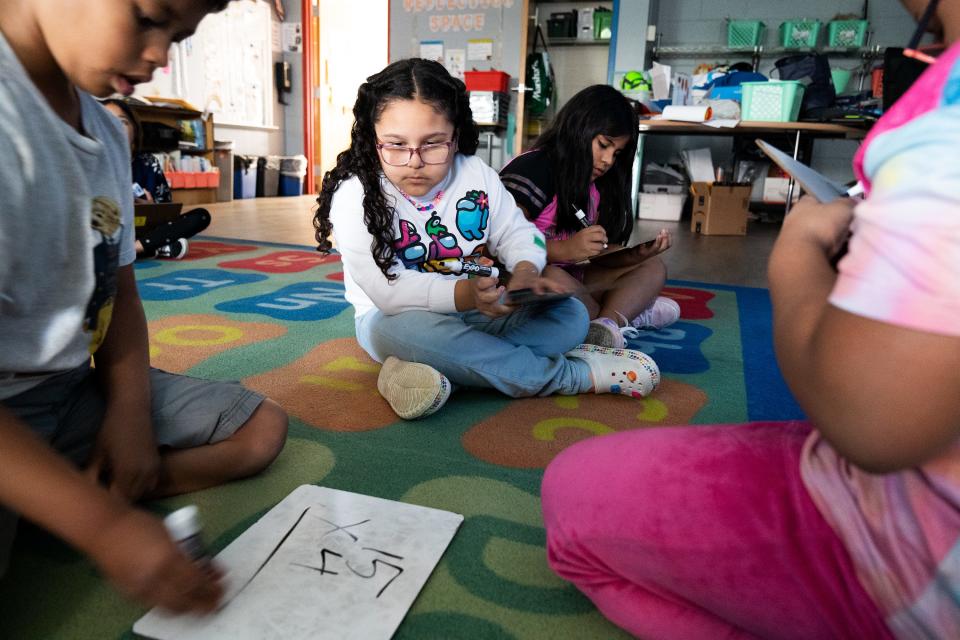

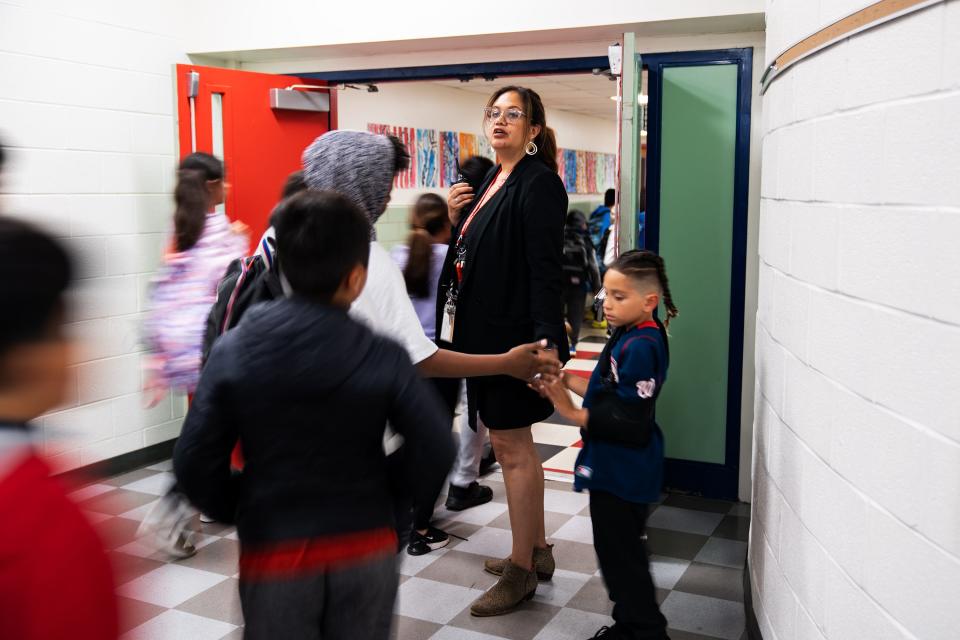
These recent moments from public schools thousands of miles apart reveal a troubling fact confronting educators, parents and students: More than three years after the COVID outbreak began, some children are thriving but many others remain severely behind. This reality means recovering from COVID could be more costly, time-consuming and difficult than they anticipated, leaving a generation of young people struggling to catch up.
This isn’t what lawmakers and education leaders had envisioned. Many were hopeful the 2022-23 school year would be the one when things would return to normal – or, at least, closer to what they were like pre-pandemic. Schools were brimming with money to test new ways to accelerate learning and hire more staff. The new hires and the educators who stuck things out were determined to help kids make progress. There was no longer a health emergency.
![A student at Downer Elementary in San Pablo, Calif., shares her hopes for the school year: "My goal for this year is to [actually] learn, because I didn't learn last year."](https://s.yimg.com/ny/api/res/1.2/be7qI.JTd6oDnMlhOr578Q--/YXBwaWQ9aGlnaGxhbmRlcjt3PTk2MDtoPTg2MA--/https://media.zenfs.com/en/usa_today_news_641/684d67edb783a202ebb9585bcc6641d1)
![A student at Downer was asked to write an essay about why her teacher was absent. "Her excuse was she went to the doctor but she truly was way [too] lazy to teach 30 [kids,] she was [tired] and annoyed of us."](https://s.yimg.com/ny/api/res/1.2/VYuHadJO.0qKiZuSyBaaIA--/YXBwaWQ9aGlnaGxhbmRlcjt3PTk2MDtoPTg2MA--/https://media.zenfs.com/en/usa_today_news_641/e635e2491813de277969568faf26e776)
USA TODAY education reporters spent six months observing elementary-school students, teachers and principals at four public schools in California and Virginia and asked them to keep journals to better understand the post-COVID education crisis and recovery. Districts in California and Virginia stayed remote for longer than those in many other states. Virginia also had some of the sharpest declines in test scores in the country.
What the reporters observed and data confirms: Kids are missing more class time than before the pandemic because parents’ attitudes about school have changed. Educators encountered students who are severely behind in reading and math yet can hardly sit still after three years of shape-shifting school days. School administrators discovered that a deluge of cash doesn’t go very far in filling jobs too few people are willing to do. Staff shortages and experiments with new curriculum – sometimes intended to cram several years of lessons into one – collided with the everyday problems of many public schools: children and families without enough food or a consistent, safe home life.
To tell this story, USA TODAY reporters cataloged moments they witnessed while visiting schools at different hours and days. What follows is a reconstructed timeline based on reporting that began last fall and an approximation of the challenges schools and students face on any given day.
6:35 a.m.
Teachers find new ways to cope with stress
After rotating through sets of ab saws, leg lifts and battle ropes, a sweaty but grinning Daisy Andonyadis leaves her 6 a.m. high-intensity interval training class early so she can make it to school on time. Equipped with a piece of her mom's homemade Easter bread, Andonyadis – or Ms. A, as students and colleagues call her – is ready to start the school day.
Ms. A, 32, started doing the class more regularly this school year to deal with the stress of teaching. She almost quit when she first started at Cora Kelly School for Math, Science and Technology in Alexandria, Virginia, six years ago, overwhelmed by the pressure to do everything perfectly. “Just being able to breathe – the exercise really helps with that,” she says.
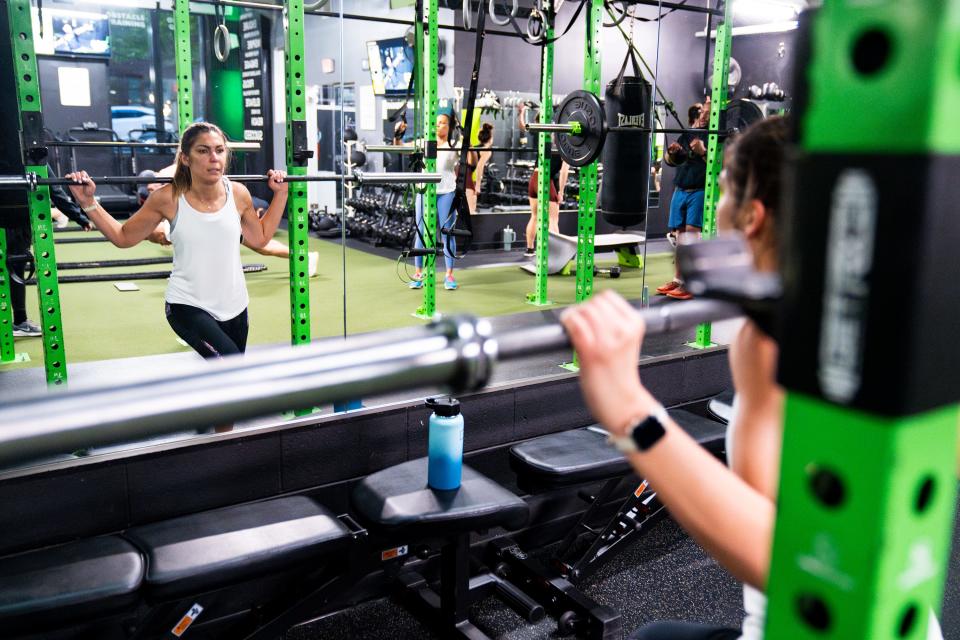
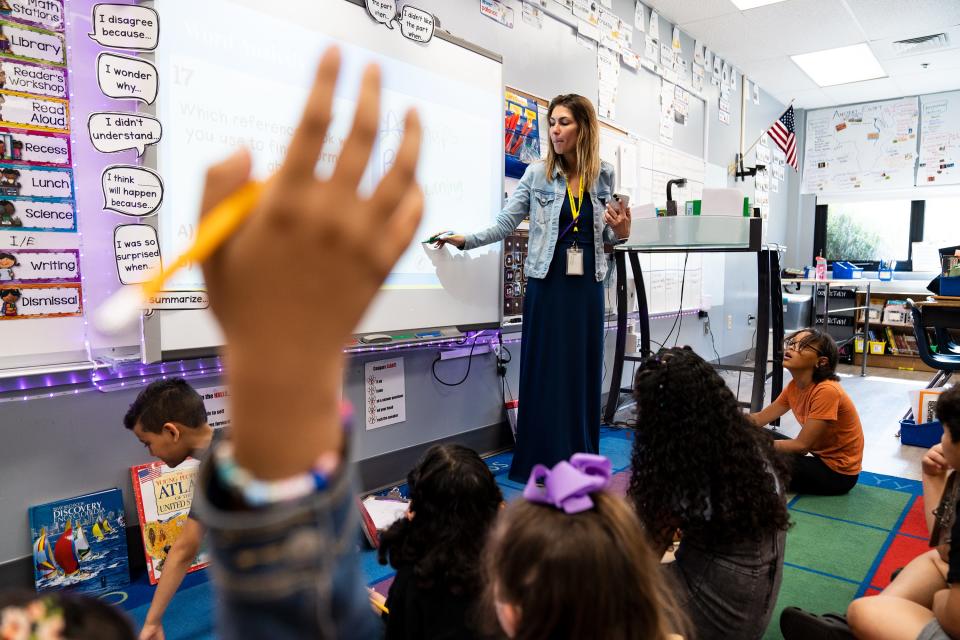
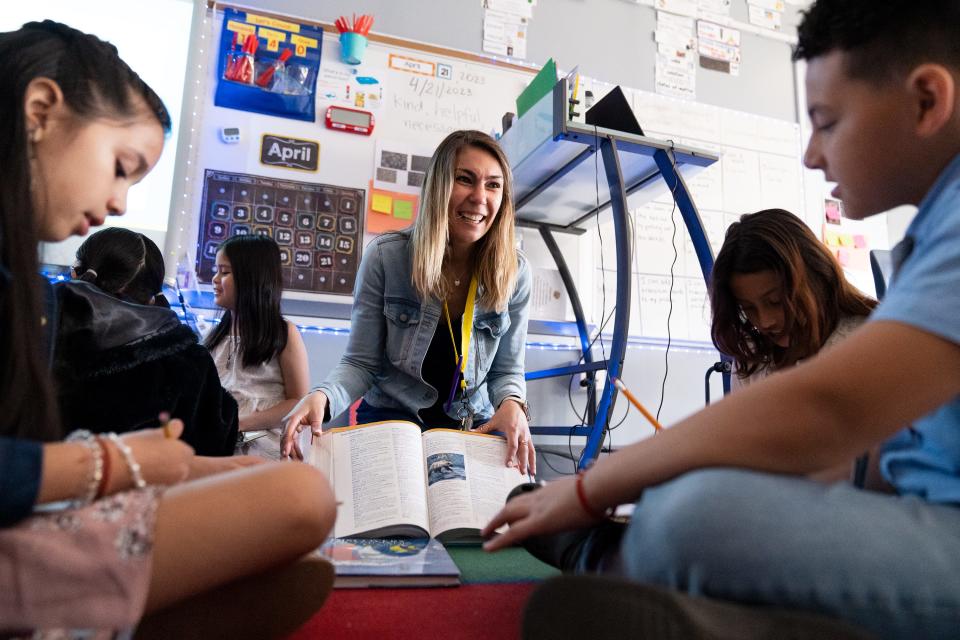
Educators’ mental health has significantly worsened since the onset of the pandemic: Nearly 3 in 4 teachers in a survey last year reported frequent job-related stress, compared with a third of working adults overall. More than a quarter of teachers and principals said they were experiencing symptoms of depression.
Later, now showered and nibbling on her bread, Ms. A kicks off the school day as she always does: with a lesson on social and emotional skills. Kids move magnets with their names on them to emoji-like faces representing different emotions. Each classroom at Cora Kelly has one of these posters, and teachers and kids alike reposition their eponymous magnets throughout the day as their moods change. Today, lots of kids put their magnets on “tired.”
7:30 a.m.
There aren’t enough substitute teachers
Principal Jamie Allardice has many items on his day’s to-do list: preparing for state testing, planning for next school year and attending to the varying needs of school staff.
It will all have to wait.
Like Principal Crews, Allardice has trouble finding substitutes at times. So he’ll be filling in for a kindergarten teacher at Nystrom Elementary School in Richmond, California.
Most of the country’s public schools reported last year that more teachers were absent than before the pandemic, and they couldn’t always find substitutes when needed. The substitute teacher shortage predates COVID – and it’s getting worse, particularly at low-income schools.
Allardice anticipates spending the day teaching the school’s youngest kids how to read sentences like “Is the ant on the fan?” and “Is the fat ant in the tin can?”
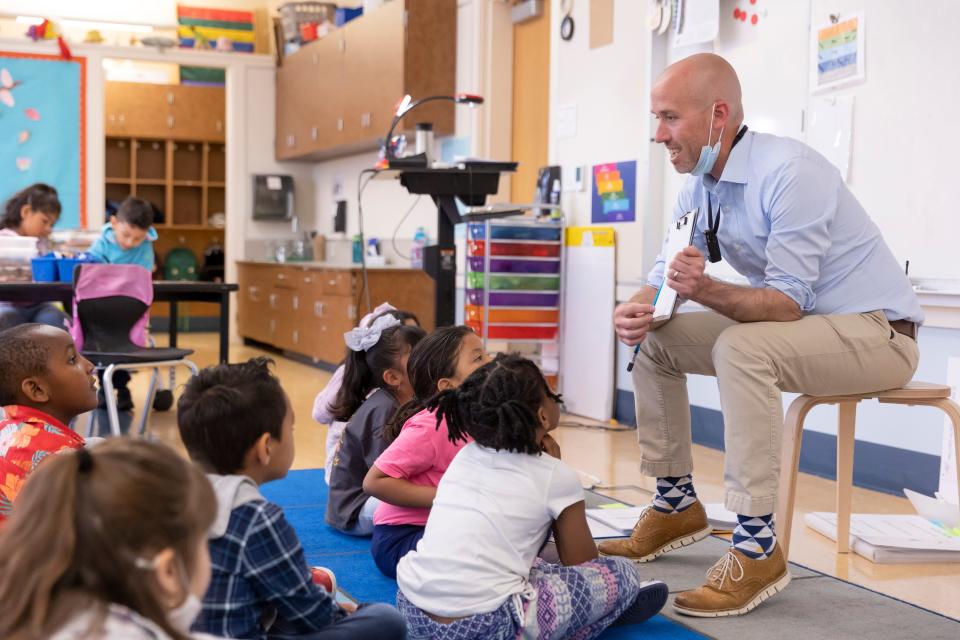
8 a.m.
Everyday reminders of the pandemic’s effects
Circles under her eyes, fourth grade teacher Wendy Gonzalez speedwalks into E.M. Downer Elementary in San Pablo, California, ahead of the first bell. The hallways are lined with student work. “My goal for this year is to actully learn,” one sheet reads, with the misspelling, “because I didn’t learn last year.”
Another wall displays photographs Downer sixth graders took during the pandemic as an ever-present reminder of the damage inflicted by the pivot to remote learning. Above pictures of an empty tetherball court, a dog sitting on a stoop and a frog in darkness looking up to light, one student wrote, “We had to go to school at home for about 13 months.”
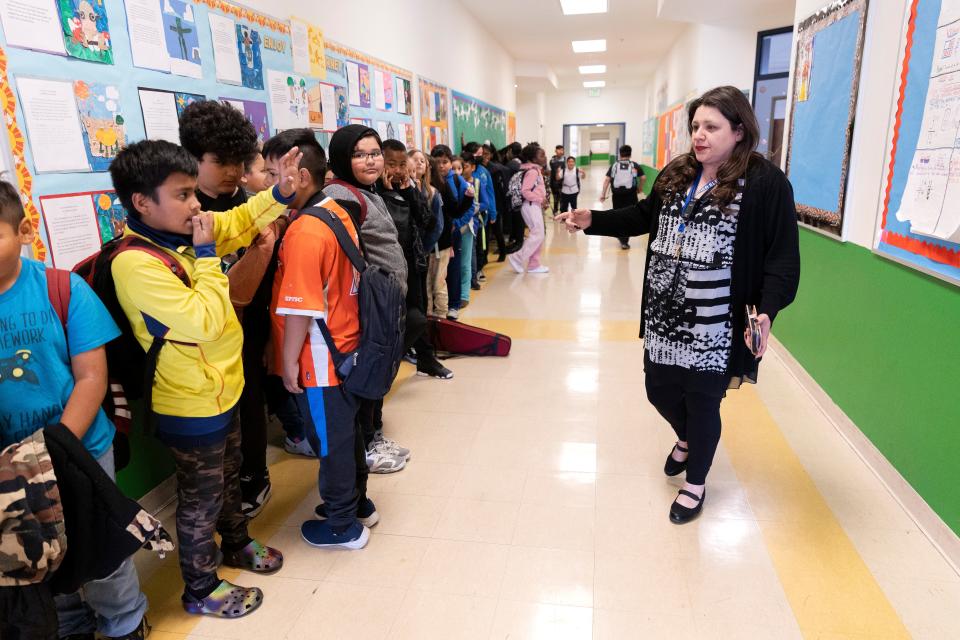
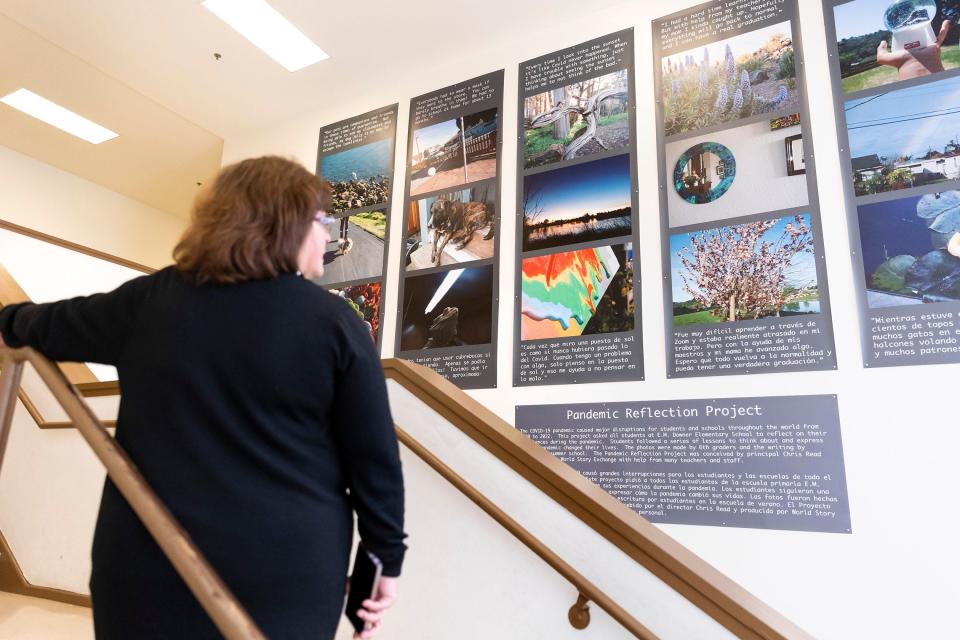
Ms. G, 45, who has taught for 19 years in the West Contra Costa Unified School District, including three at Downer, is in a hurry to see what condition her class is in after a substitute filled in the two days she was absent last week. She had a ministroke in March, which she blames in part on stress from teaching this year.
In her classroom, her copy of a new Spanish textbook, "Caminos al Conocimiento Esencial,” is on her desk next to a set of Black history flashcards, a San Francisco Giants bobblehead and a can of Sunkist. On top of all the other academic targets her students must meet this year, the principal and literacy coach want her to test new lessons for teaching kids how to read and write in Spanish.
“If I didn’t love my community I would be gone,” says Ms. G says after taking a seat. Notes of thanks and praise are tacked onto a bulletin board next to her.
8:10 a.m.
Principals have to be ‘there for everyone’
As part of her morning rounds, Principal Crews, 45, stops by a fourth grade classroom in the middle of a lesson on future careers.
She notices a boy’s face is swollen and pulls him to the side. She feels his forehead, asks him if he’s feeling OK, if he was playing out near the poison ivy. He says he was playing there and it feels like a mosquito bit his face. She escorts him to the school nurse.
Crews worked for more than 15 years in Virginia and California schools before becoming principal of Cora Kelly six years ago. She knows every student by name, greeting each one as they arrive at school. She’s also keenly attuned to each child’s individual needs on any given day – whether it’s for clothes or a first-aid kit.
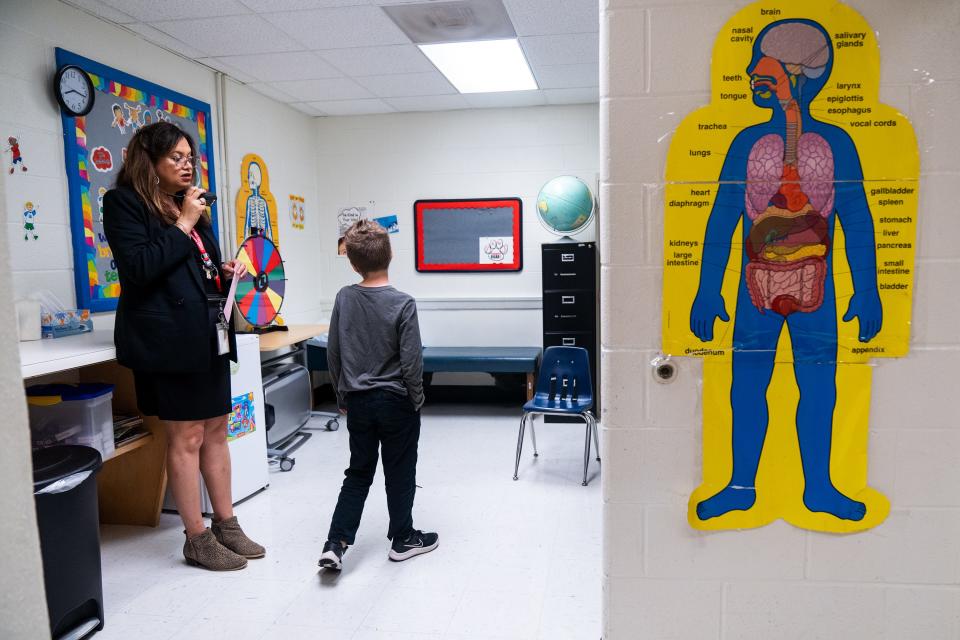
Cora Kelly uses a framework known as a multitiered system of support, which is a fancy way of saying it works to address the core issues, in and out of the classroom, that may be affecting a child’s behavior or academic performance. That can mean home visits if a student misses a lot of school or help from a social worker if a child needs shoes or a screening.
It’s emotionally grueling but gratifying work, Crews says, as is the job of supporting her own staff’s mental health.
“The hardest part of being an administrator has been coming back and making sure (the teachers) were OK so they could be there for the kids,” Crews says. “I wasn’t prepared for the tremendous emotional strain that that’s had on me. I had to be there for everyone, to make sure to take care of them so they could take care of the kids.”’
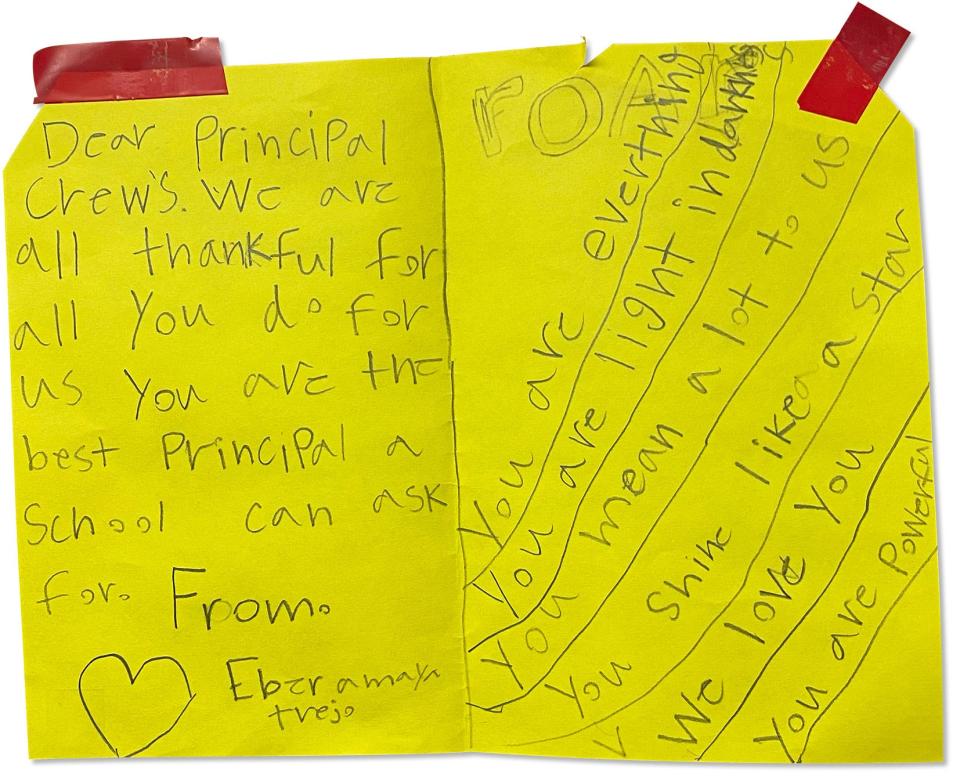
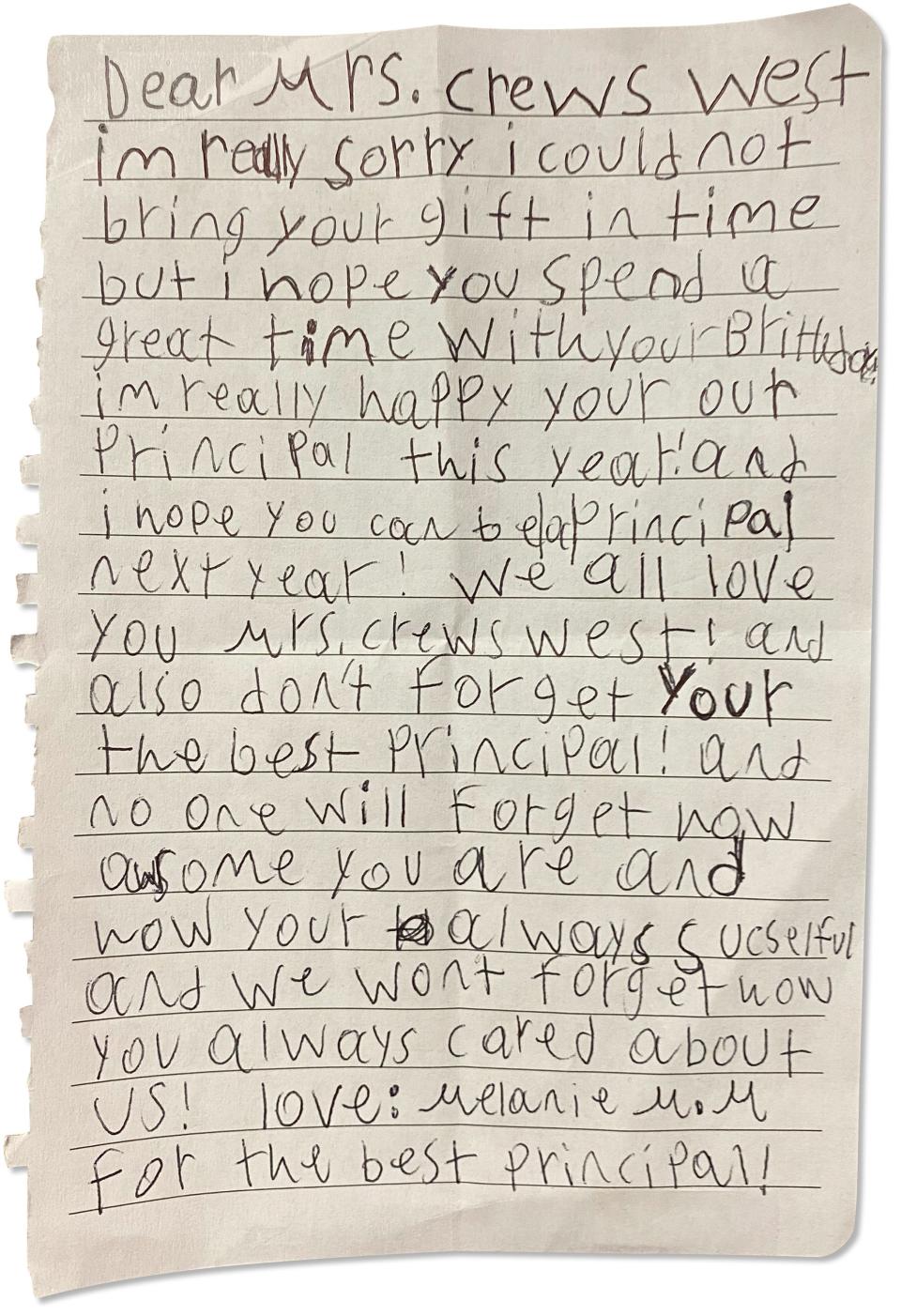
8:25 a.m.
Rewarding good behavior
Ding. The students in Ms. A’s class are familiar with this chime. It means their teacher has given one of them a point using an app called Class Dojo that tracks their behavior. It has other functions, too, such as managing homework and communicating with parents.
Throughout the day, soft chimes signify when Ms. A has given a student a point. She rewards all kinds of things – being quiet, sitting nicely, getting an answer right, helping a classmate, simply attending. At other times, a different noise erupts when she’s deducting points. Maybe a kid wasn’t listening or following instructions. Maybe two students got into a tiff.
Kids with lots of Dojo points can exchange them for prizes such as a gift card to Chick-fil-a. These incentive systems, Ms. A says, help reinforce the behaviors and habits – from respecting others’ physical space to coming to class on a consistent basis – that many students failed to learn because of remote schooling.
8:35 a.m.
Kids’ attention spans have shrunk
Ashley and her classmates at Cora Kelly are in math class with the other third grade teacher. An assistant is out, the teacher announces, so the kids have to work independently while she consults with small groups.
Today’s lesson is on imperial measuring units for liquids – gallons, quarts, pints, cups – and the teacher says she has a story that will help them memorize valuable information for their upcoming state math tests. The story is called The Kingdom of Gallon, she explains: The kingdom has four queens – in other words, four quarts. Each queen has a prince and a princess – two pints. Each prince or princess has two cats – two cups.
Kids proceed to cut and paste pictures of different items – a gallon of paint, a carton of milk – onto papers with labels for the unit. Many, including Ashley, are distracted. She spins her notebook around a pencil. One of her knees bobbles from left to right. She gets up to tap a pencil on the table, to the projector to wave her hand under the camera. She yawns and plays with her shoe.
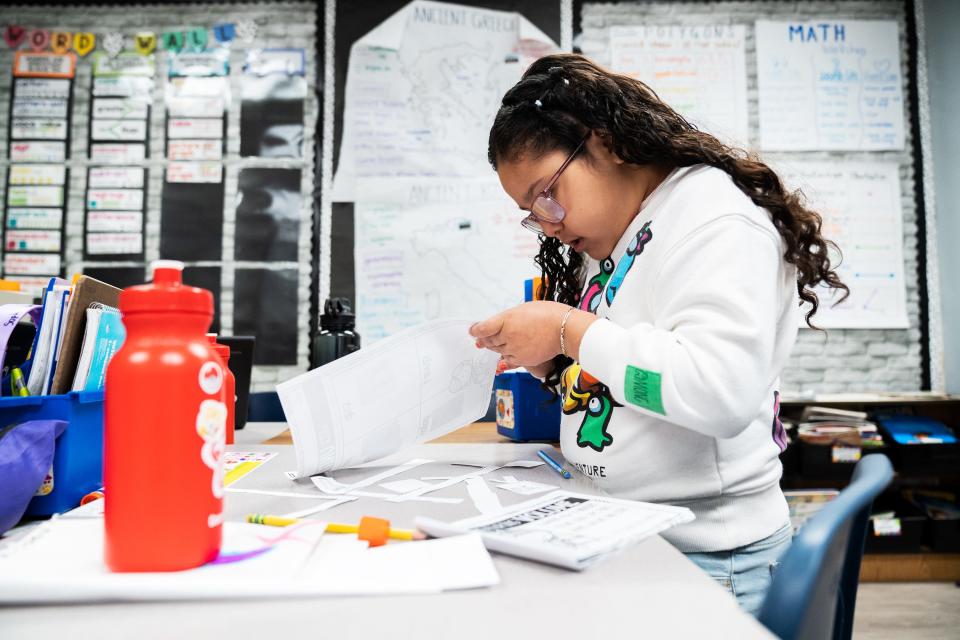
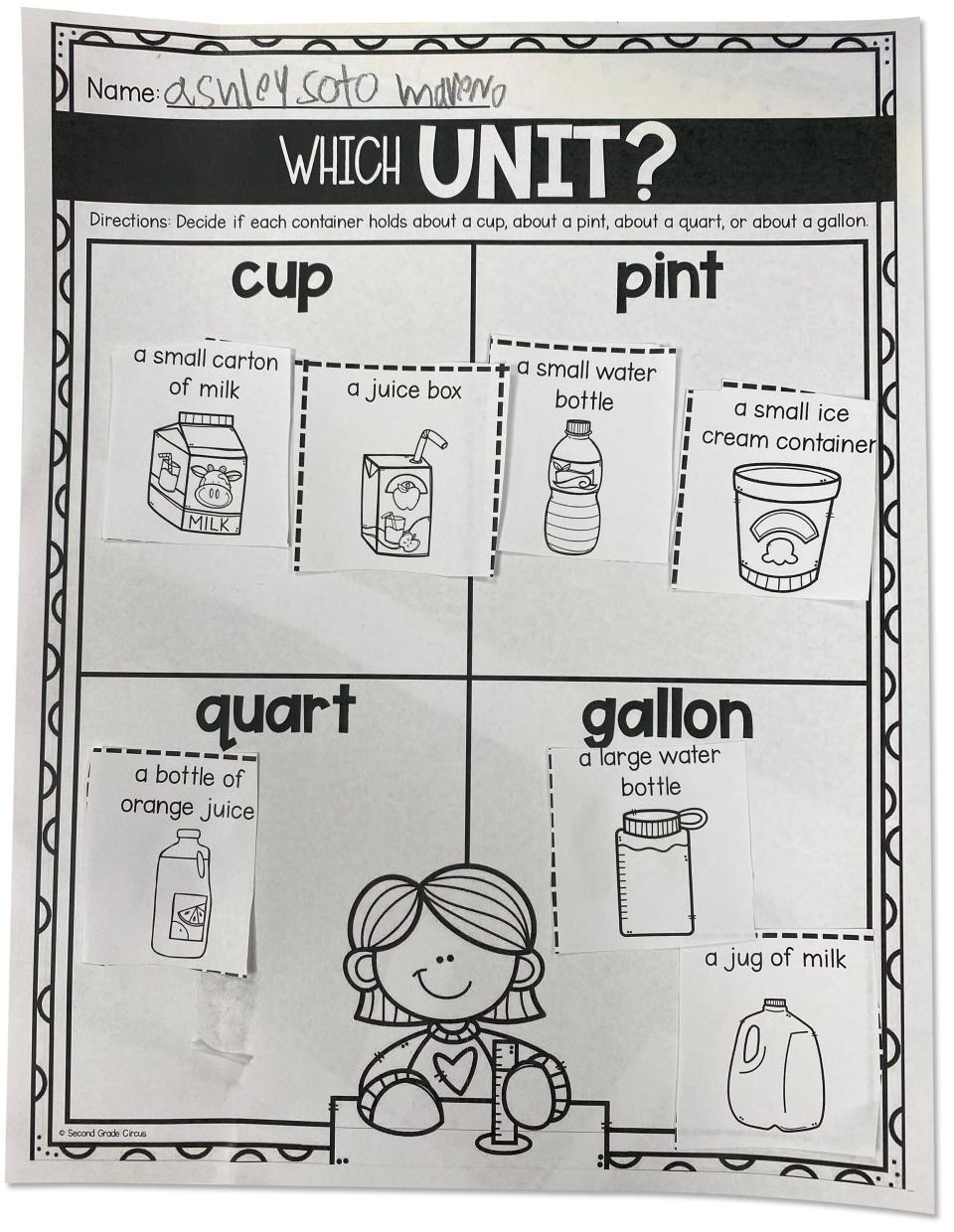
Teachers and parents nationwide report kids’ attention spans are even shorter since the pandemic, perhaps in part because it led to unprecedented amounts of screen time among children. Educators strive to make lessons engaging but kids can’t always concentrate, especially when there’s only one adult in the classroom.
Ashley pastes an image of a large water bottle under the wrong label – gallon when it should be quart. She quickly realizes it’s a mistake and tries to unstick the image. Ashley, who in her spare time loves drawing and making jewelry and collecting rocks, is careful to reposition the square so it doesn’t cover the face of a girl displayed on the worksheet.
8:45 a.m.
No multiplication charts allowed
Mr. LaFleur tells the class they'll review skills for a state math exam that will cover multiplying, long division and fractions. Jada Wilson groans when he says they can’t use multiplication charts on the test.
Jada, 10, has improved on fractions and expanded division this year but worries how she’ll do without the aid. She began fourth grade with the skills of a kid halfway through second grade, LaFleur said, but has made up most of that ground.

Jada’s progress is an exception: Other students’ scores moved backward mid-year.
“I really questioned myself and my teaching. It can’t get any worse than that feeling. But it helps to look at students like Jada who’ve grown each time,” LaFleur says.
9 a.m.
Missing class instead of making up for lost time
As Mr. LaFleur’s class begins a reading lesson at Nystrom, several seats are empty. One of them belongs to Jayceon Davis.
Jayceon’s mom, Georgina Medrano, works nights and occasionally gets home at 2 a.m. Sometimes she dozes off after waking her kids, and they don’t make it to school on time. Jayceon said he is sometimes confused doing his homework because he misses the lessons and hasn’t turned much of it in.
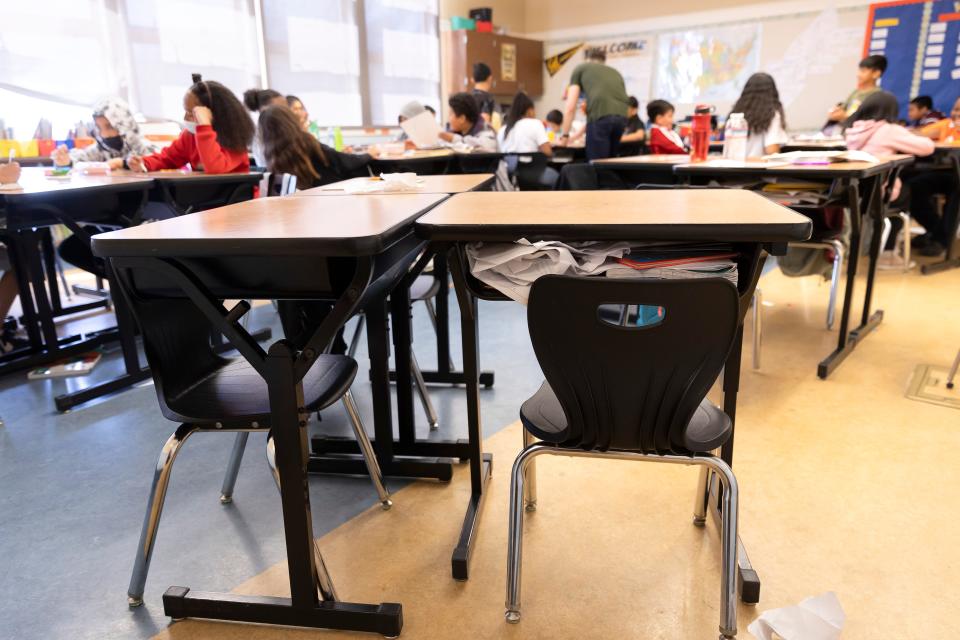
For kids who are already behind this school year, every minute of learning this year was critical, but far more for students who missed more school days than before the pandemic. Chronic absenteeism – generally when kids miss more than 10% of the school year – increased in more than 70% of schools nationwide last school year, federal data shows.
Jayceon began the year with low test scores in reading and math, unbeknownst to Medrano, who says she’s frustrated no one told her about it at the beginning of the school year. “He reads to me at home, so I don’t understand how he’s behind,” she says.
Medrano says she also knew nothing about Jayceon’s missing assignments until March, when she got a text from LaFleur, who says he tried several times early in the school year to call Jayceon’s mom about the homework with no success. Then he gave up, hoping she would see notes sent through the school’s online messaging system. She, like many parents this year, didn’t have a real sense of how their kids were doing in school.
9:30 a.m.
Reading, writing and riding
Ashley, like many kids in her class, has never ridden a bike without training wheels. Today in P.E. class, she and the other novices learn on a special bike designed without pedals. The purpose: to learn how to balance.
It takes a while, but before the end of class Ashley, her long curls streaming behind her, manages to glide for 10 seconds without touching her feet to the ground. She graduates to the stationary bike.
She’s thrilled.
It may have nothing to do with phonics or probability or photosynthesis, but this learning matters, too. It’s the kind of lesson that was impossible to replicate during the pandemic, and one that students seem to enjoy most.
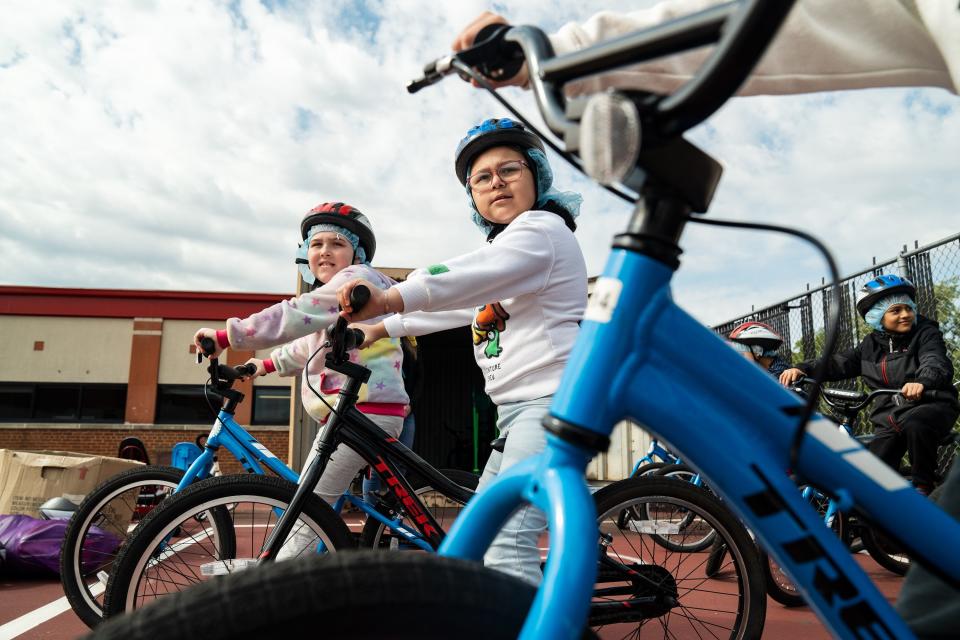
10:30 a.m.
Turkeys and monkeys
It’s just before recess and lunch in Ms. A’s class. She issues constant reminders to pay attention and be quiet. Yet some students lie on the ground, chit-chatting. Others make animal noises, gobbling like a turkey and grunting like a monkey.
Ms. A moves her magnet on the classroom’s mood chart to “annoyed.”
Eventually she says to the group: “I think we need to refresh. Everyone’s a little tired. And it’s Fri-Yay! But we are here to learn.”
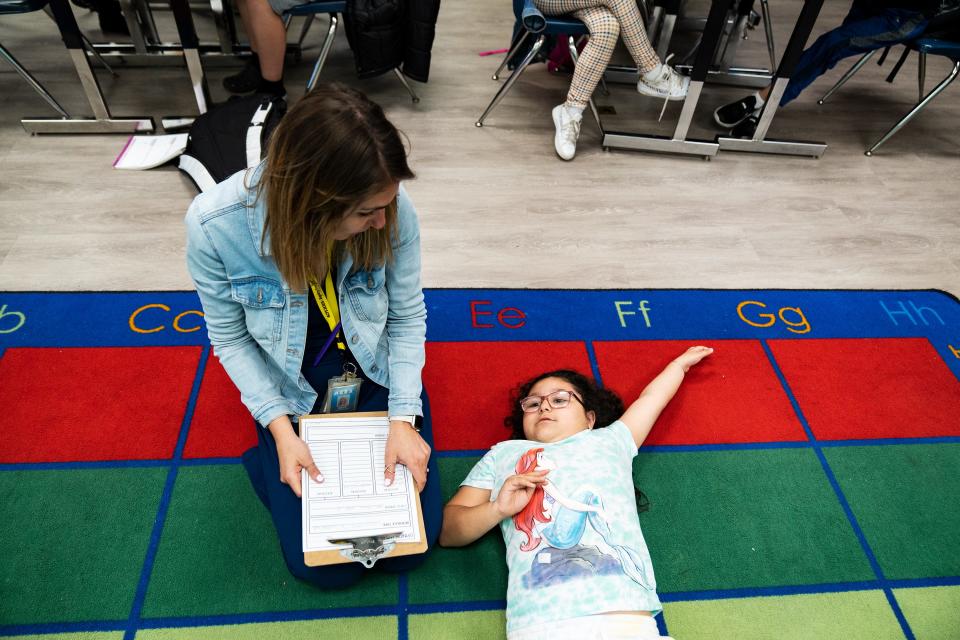
One boy sneaks out to get a pack of Gushers candy from his backpack hanging near the classroom door. With a smirk, Ms. A orders him to hand the gummies over, saying she doesn’t want him to get a sugar high.
It’s the kind of thing she’s now able to brush off, a skill she didn’t have as a new teacher. She ignores children who are bickering, keeping her voice gentle and smooth as she delivers instructions.
Despite all the distractions, she successfully engages most of the children in a game that quizzes them on their reading skills.
10:45 a.m.
Phonics time
Gathered at a half-moon-shaped table in the back of Lisa Cay's third grade classroom at Sleepy Hollow Elementary in Falls Church, Virginia, four students sound out rhyming words – search and perch, dead and lead – as they review phonics skills ahead of the state's reading tests. It's one of countless intensive phonics sessions these and other elementary schoolers have had this school year amid a renewed push for a more scientific approach to reading instruction partly in response to learning gaps deepened by the pandemic.
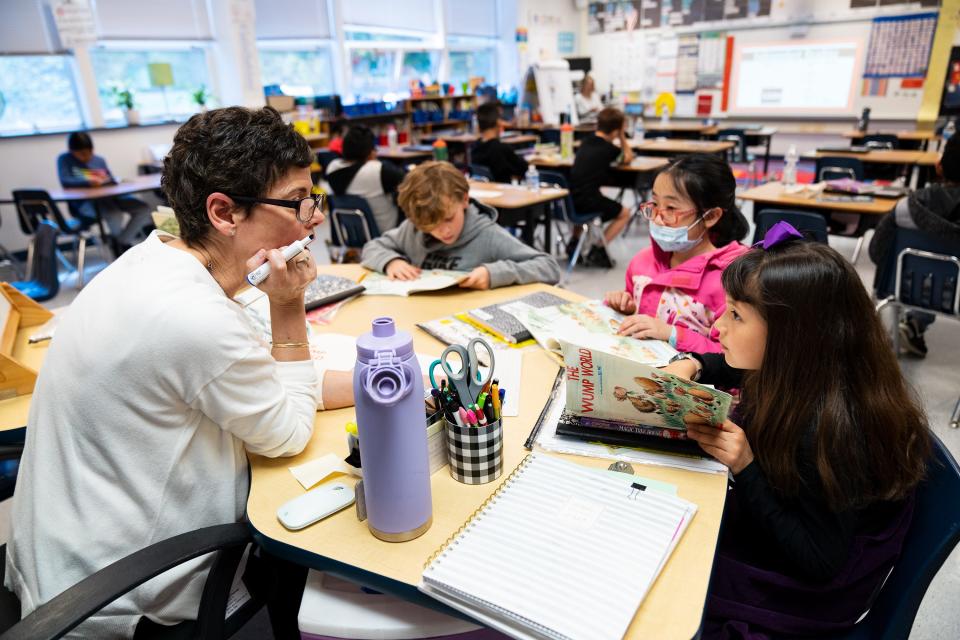
Mrs. Cay, 58, then passes each student a copy of “The Wump World,” about creatures who live on an imaginary planet. One by one, they read aloud with the help of Mrs. Cay, who on a small white board, writes words they stumble over – “broad,” for example, and “chief.” After each passage, she reviews the problem word with them. The room is quiet with the exception of this group’s hushed voices, their peers reading independently elsewhere.
Mrs. Cay hopes the district’s greater emphasis on phonics – and its distancing from an approach that focuses on helping kids dissect a text’s meaning without first showing them how to sound out words – helps boost Sleepy Hollow kids’ literacy. But “it’s going to take a few years” before the effects kick in, Mrs. Cay says. The local school district adopted the new phonics program last school year and started requiring it in the fall.
Noon
New educators consider leaving
Seated at his desk at lunchtime underneath a pennant of his alma mater, University of California, Berkeley, LaFleur says it could take some students as many as five years to catch up to where they should be. He expects just a fifth of his own students to pass the state math test. LaFleur, 25, came to Nystrom in the 2020-21 school year through Teach for America, an organization that places recent college grads in high-needs classrooms.
“This is the only normal I’ve ever known,” he said.
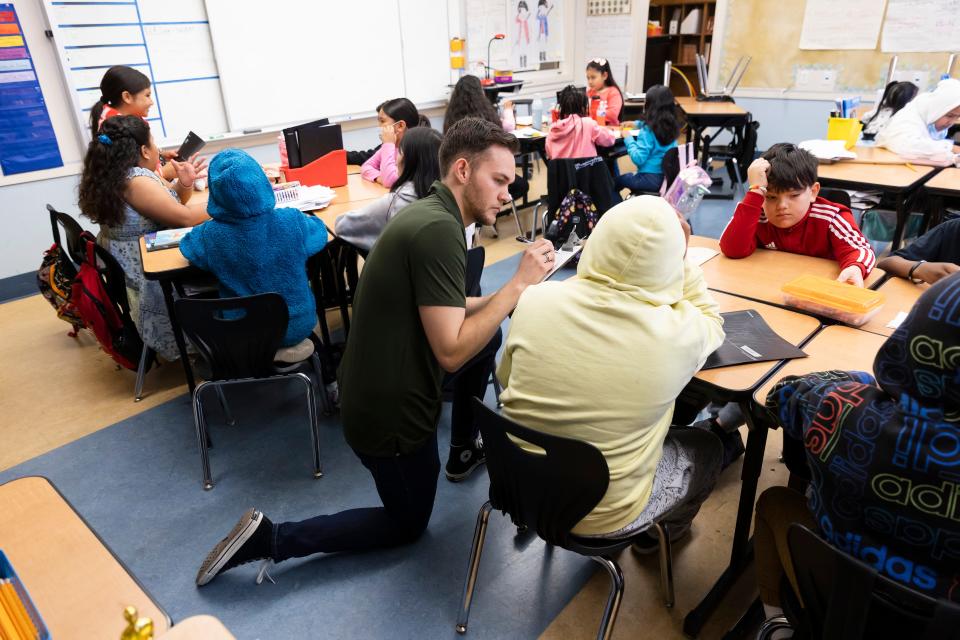
But LaFleur recently decided he wants out.
Teacher turnover has increased in recent years: More teachers left their jobs in at least eight states after last school year, and educator turnover was at its highest point this year than in the past five years, data shows.
LaFleur hopes he’ll get the new job for which he’s being considered. Otherwise he will return next year to Nystrom, as he wrote in his journal, to face “the same problems, move through the same cycles, and feel the same feelings.”
12:15 p.m.
‘It’s been a long day’
Principal Crews planned an end-of-day assembly for all of Cora Kelly’s students about simple machines such as wheels, levers and pulleys. Given the day’s nonstop rain, which forced kids to have indoor recess, they’re in need of something fun and to channel their energy. But the traveling troupe scheduled to perform at the assembly is running late.
Whipping out her walkie-talkie, she tells school leaders to prepare to pivot if the troupe doesn’t arrive in time before dismissal. Crews then unzips her black fanny pack – filled with Band-Aids and plastic gloves and Cora Kelly-themed play cash – and pulls out a bottle of Excedrin. Crews takes two. “It’s been a long day,” she says.
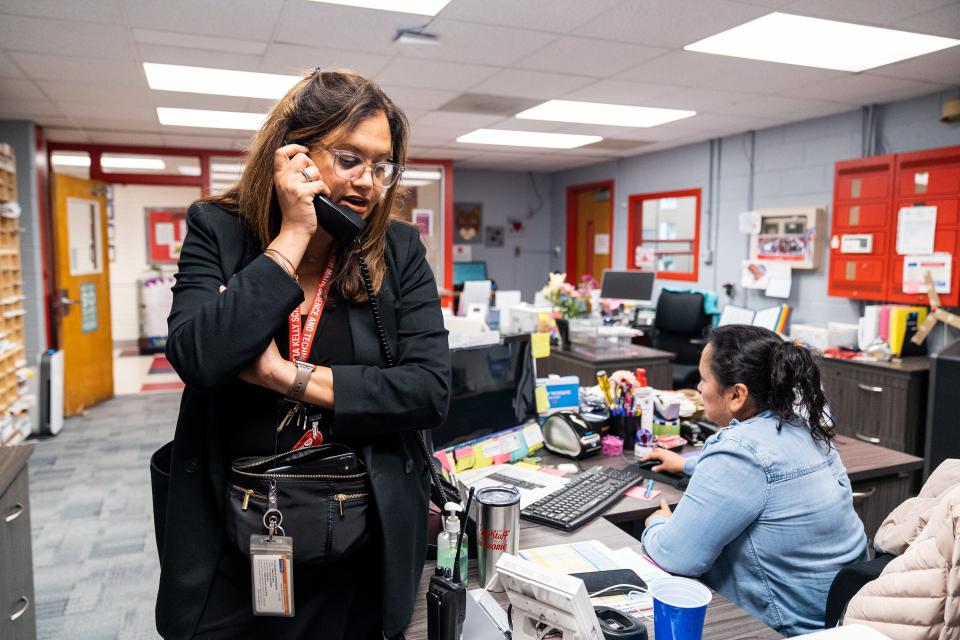
1:25 p.m.
Catching up on reading time lost
During a class read along of “Esperanza Rising” for the Spanish portion of Ms. G’s class, students erupt in debate about whether Esperanza’s mother should marry for stability. Valeria Escobedo Martinez, 9, shouts “This is like a telenovela!” The scene reminds her of a TV show she watches at home with her mom, she says.
Even though Valeria says Ms. G’s classroom can be too loud, classroom discussion during reading lessons has helped her make up for reading time she and other kids lost out on during the pandemic.
“I think I’m still leveling up,” she says. Ms. G says “she’s close” to meeting expectations for reading in English and may shed her “English learner” designation next year..
Ms. G is familiar with students who are behind on reading. She spends most school mornings teaching fourth, fifth and sixth graders how to read words using phonics, which is new to Downer this year.
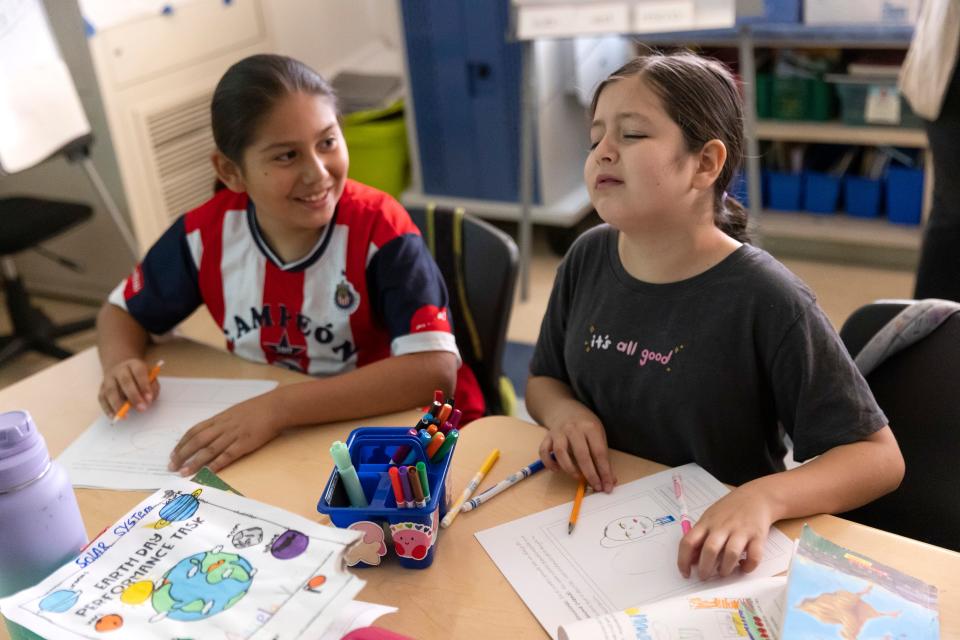
1:32 p.m
Intervention time
It’s time for Ms. A’s students to break out into small classes – enrichment for students who are advanced and intervention for those who are behind. Ashley and about half a dozen of her peers head to reading intervention class, which she spends laughing along with her peers at the teachers’ jokes, earnestly scanning her dictionary and reciting lines from a passage during a group read-aloud. At one point during the read-aloud, she notices the teacher accidentally skipped a paragraph. The teacher commends Ashley for noticing – what if, she asks, I had skipped a paragraph while taking the state reading test?
Later, as kids independently fill out worksheets, Ashley erects her dictionary as a privacy shield. She doesn’t want others to copy her answers.
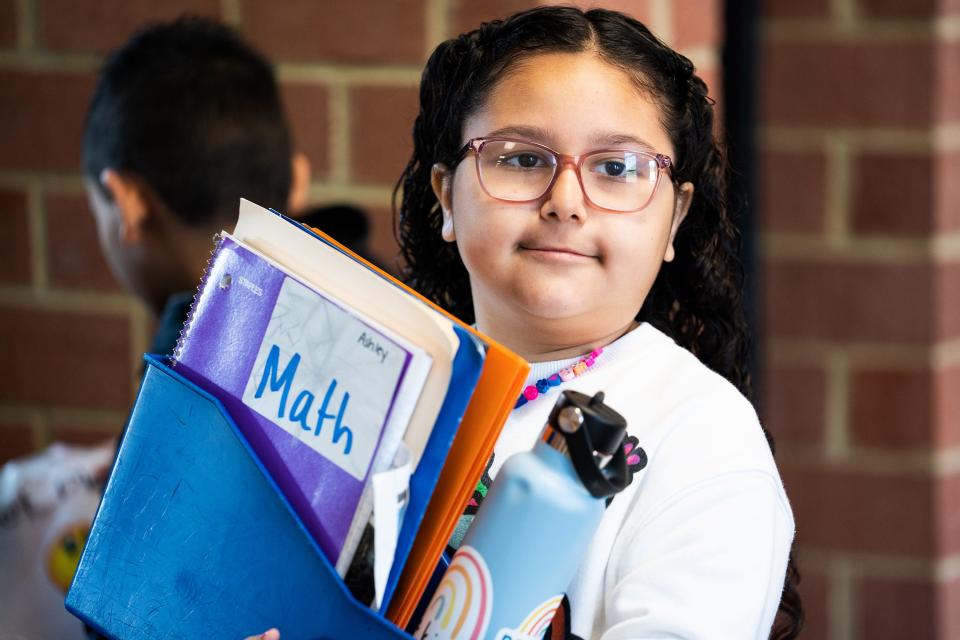
Ashley wasn’t always this confident. She needs glasses and while she proudly wears a pair of pink frames now, during the pandemic her vision problems went undiagnosed. Schools usually provide vision screenings but they were one of the services that went away with COVID closures. Her inability to see the screen and understand homework left her feeling frustrated and defiant.
3 p.m.
‘Never going back to normal’
Maria Bustos picks up her son Erick from Ms. G’s class. Pre-pandemic, Bustos may have spent the afternoon on Downer’s campus, helping her son’s teachers or planning a school event with fellow parents. Now, lingering pandemic restrictions don’t allow for her to be as active in the school community as she used to be.
“I feel like we're never going to go back to normal – and not just in schools but in everything and everywhere,” Bustos says. “We used to do a Halloween parade, and even celebrate kids' birthdays by bringing pizza."
She is optimistic about being able to volunteer next year, though, given she was able to attend Erick’s music performance on campus at the end of the school year and an in-class party three days before the end of school in Ms. G’s classroom.
3:15 p.m.
Leadership turnover creates further challenges
As the new leader of her school, Ruby Gonzalez, 61, is in the midst of two separate video calls in her office: one about the education plan for a student with disabilities and another that includes other school administrators.
She took over when Downer’s longtime principal, Chris Read, found out he had colon cancer. Read began chemotherapy in March and took a six-month leave to avoid other sickness. After Principal Gonzalez filled in, she tapped Ms. G to take over given her past experience as a vice principal. Ms. G lasted for two days before deciding she didn’t want to abandon her fourth graders. “The kids notice when I’m gone,” she says.
She still helps out often.
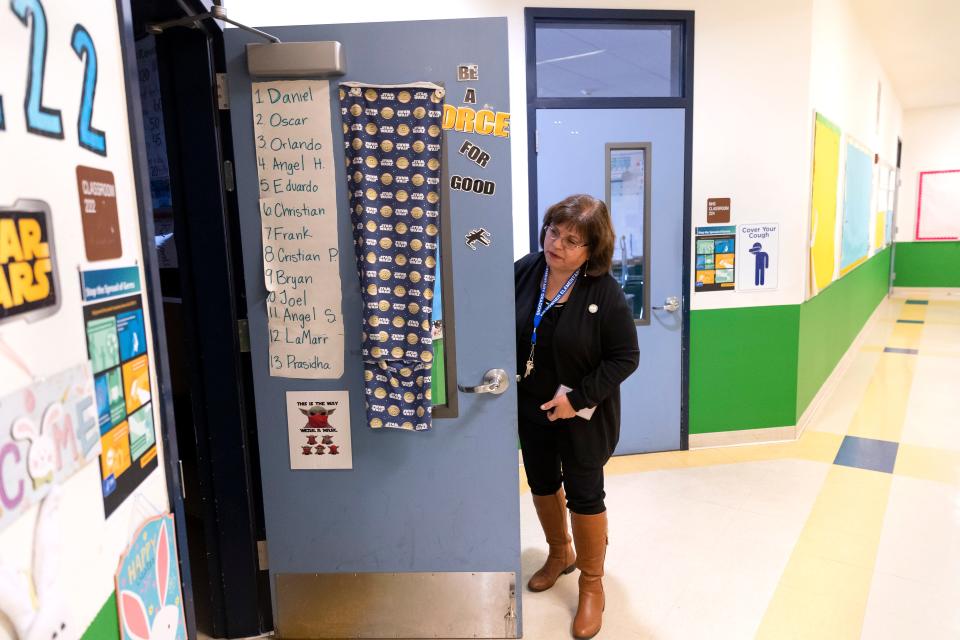
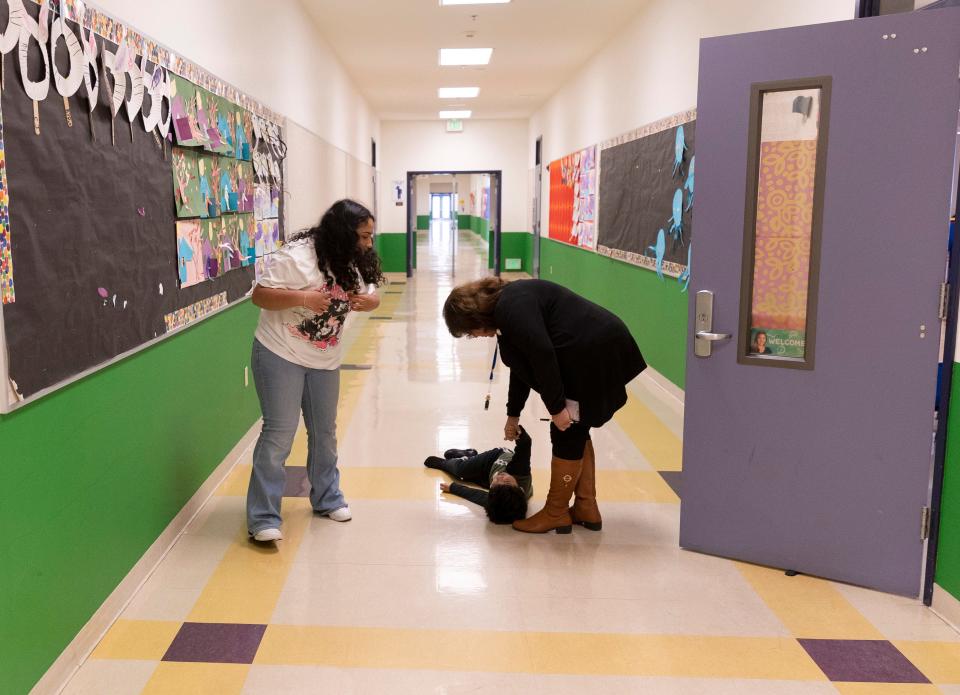
Two other substitute principals stepped in months before the end of the school year. One quit after a few days. The other comes a few days a week to help out. It’s unclear who will lead next year. Once Read returns from leave, he will have a new job overseeing visual and performing arts education districtwide, a role he’s long wanted.
Recent data shows that more principals last year quit their jobs than early on in the pandemic.
“This has been one of the most difficult years I think; even more than last year,” Ms. G says. “There’s multiple things: Our principal is out and Ruby’s trying to do the best she can. … And there are new things we're all trying to learn. On top of that there's more work and discipline. The kids are feeling it.”
3:50 p.m.
Not enough time
It’s time for kids in Cora Kelly’s after-school tutoring to be dismissed, but Ashley doesn’t want to leave. She’s eager to master the skill of reading an analog clock. She begs her tutor, the same math teacher she had earlier in the day, to stay longer.
“I love, love, love learning,” Ashley says.
But it turns out her school year is ending earlier than she may have liked, too, much to Principal Crews’ frustration. Ashley and her family will be traveling to her mom’s home country of El Salvador a week before the last day of school. Experts say absenteeism remains widespread in elementary schools, whose students’ attendance relies on their parents’ decisions and schedules.
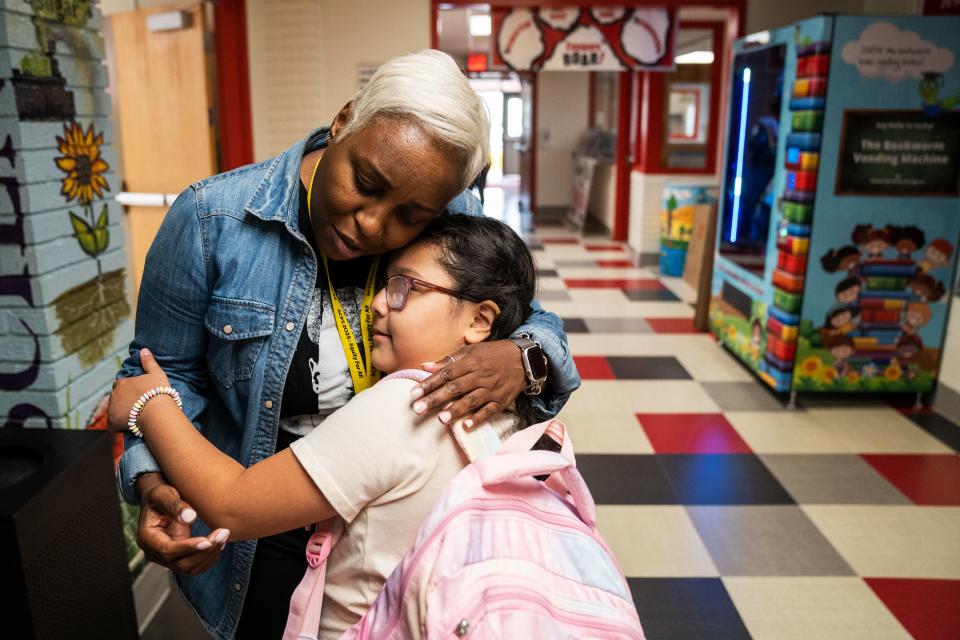
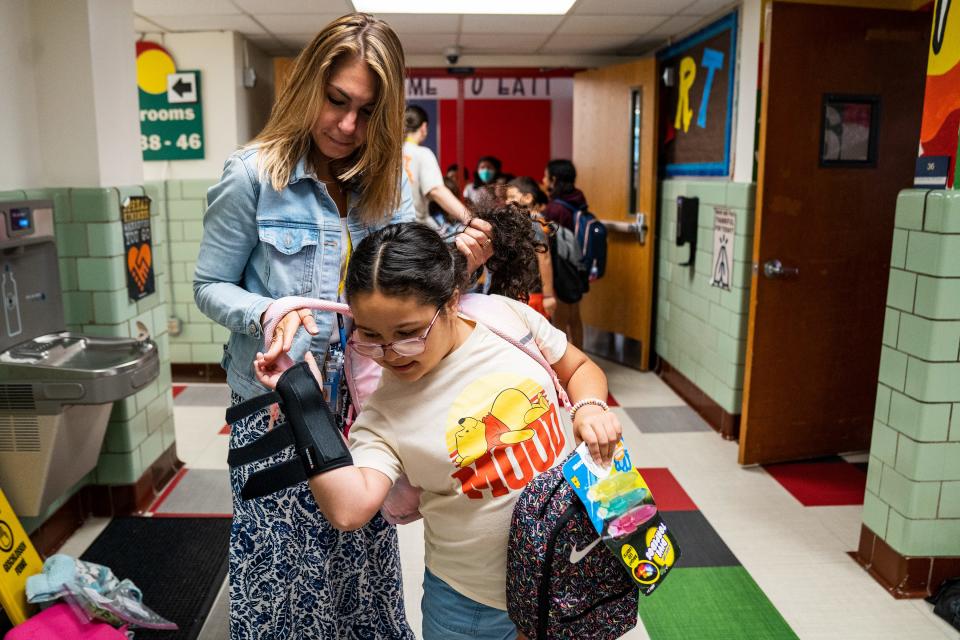
5 p.m.
Giving in to a calculator
Jada is stationed in the school cafeteria trying to solve a multiplication problem while she and her younger sister wait for their mother to pick them up from Nystrom’s after school program. She sighs, leans her face on her fist on the cafeteria table and says, “This is too hard!” A few seconds later, she pulls out a calculator to solve the problem.
Despite her growth this year – end-of-year math tests show Jada jumped from having middle-of-second-grade skills to working at a mid-fourth-grade level – she and many classmates are behind where they should be.
Her mom, Michaela Alexander, rushes into the cafeteria to get the girls. Alexander tells Jada she isn’t too worried she’s behind on math: She understands Jada had a very different experience from a lot of kids in elementary school who learned in a classroom setting uninterrupted by a global pandemic. She has faith that the teachers at Nystrom will help her catch up.
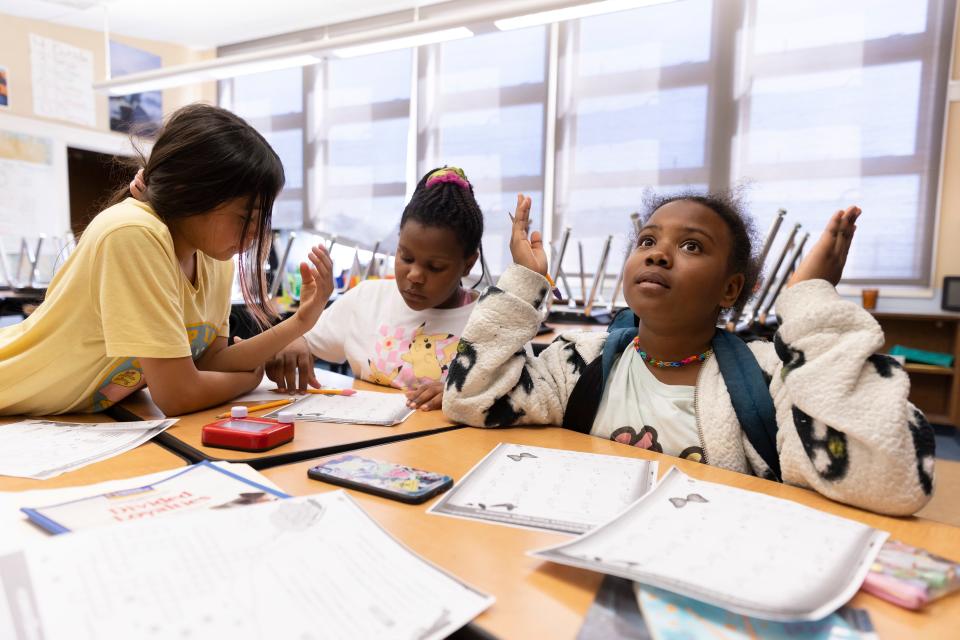
5:30 p.m.
‘She’s better than me’
At her small white trailer in a mobile home park in San Pablo, Valeria, her mom, Maira Martinez Perez, and her grandma, who is visiting from Mexico, sit on separate benches next to each other in a tidy combined living room and kitchen. It’s the same home in which Valeria would pull out her Google Chromebook each morning, log onto school and start the day with jumping jacks to loosen up, as instructed by her teacher, when school shifted online.
Just as Downer pivoted to remote learning, Valeria’s mother lost her job cleaning at another school. Now her mother is working again, and though a kid herself, Valeria has taken on some of the care of her younger sister Itzel. Valeria is sometimes interrupted by the 5-year-old when she tries to read at home.
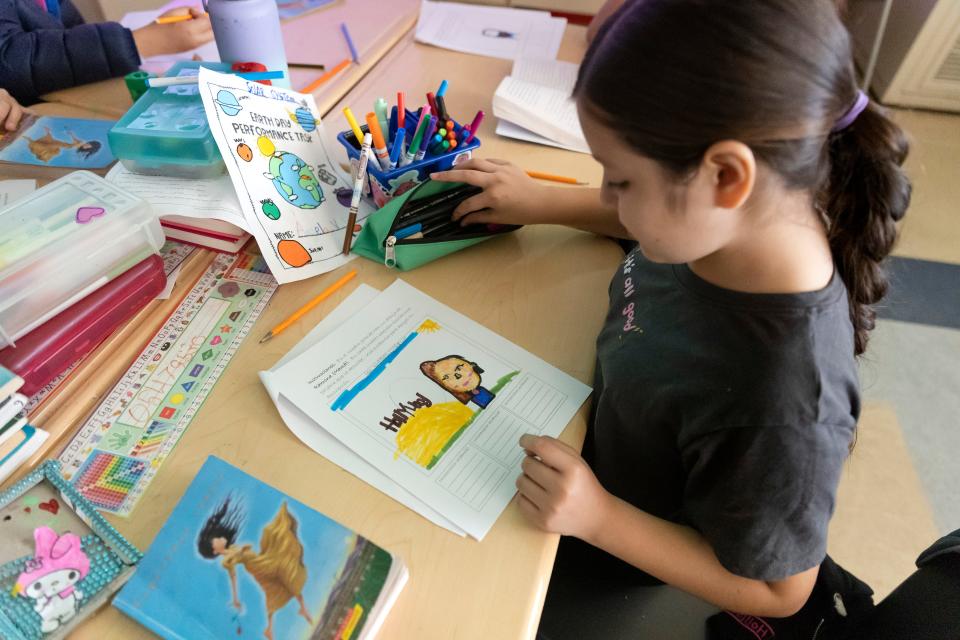
Itzel peeks out from the only bedroom in the home closed off by a sliding door.
At school, “she’s better than me,” Valeria says of her sister.
No pandemic interrupted Itzel’s schooling.
Story editing by Nirvi Shah
This article originally appeared on USA TODAY: Why US schools are still facing big problems even after pandemic's end

